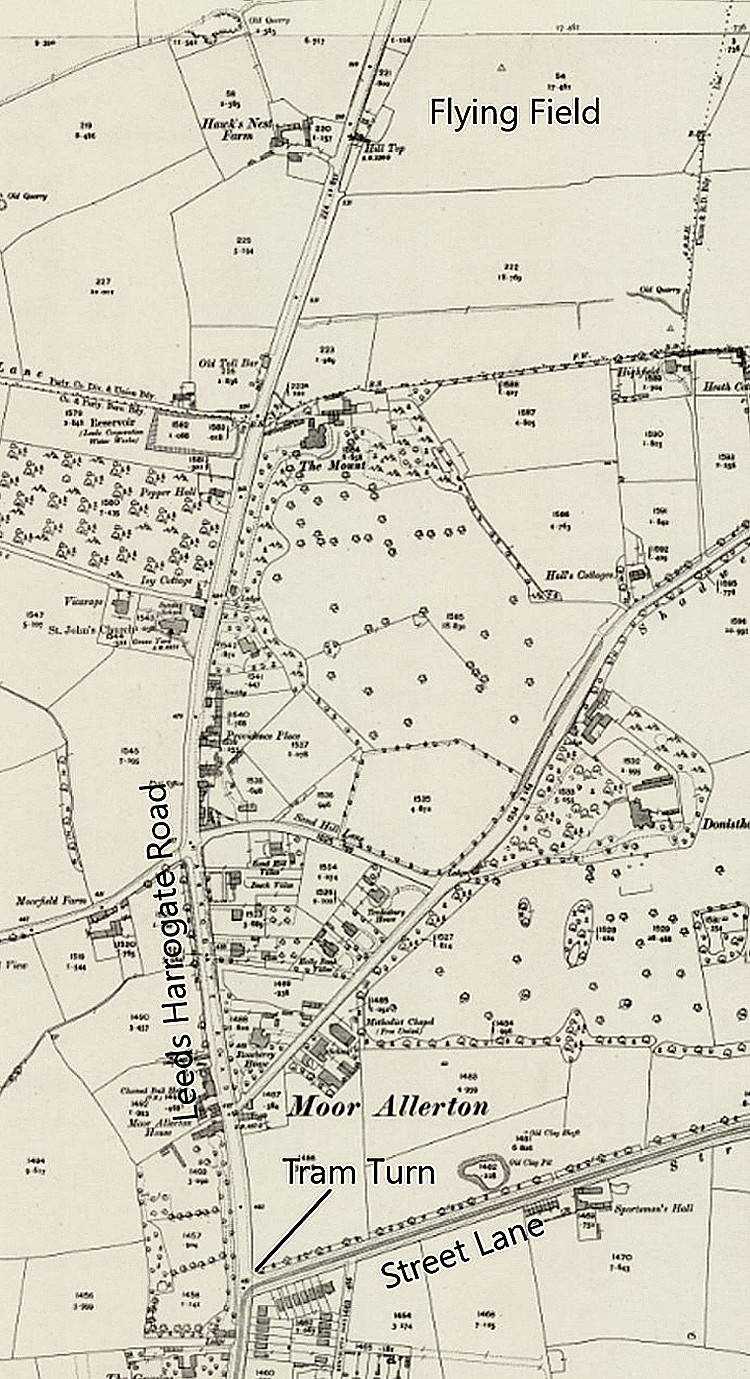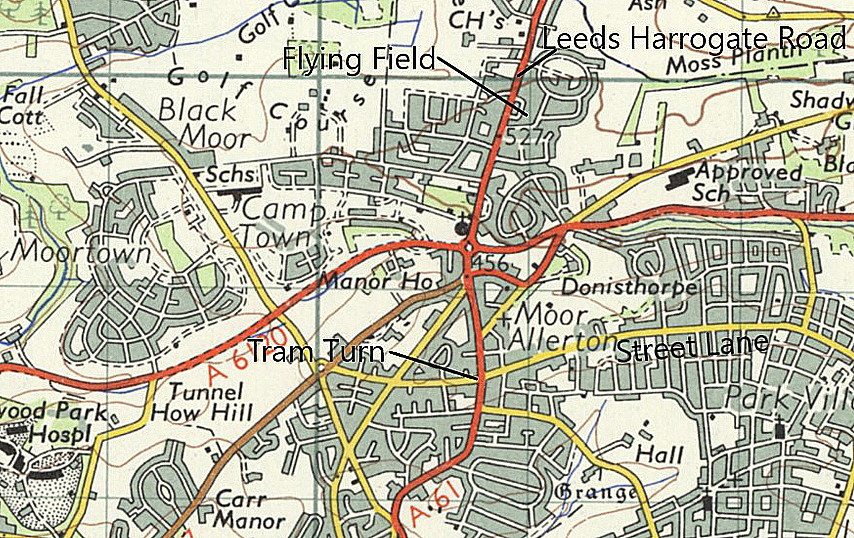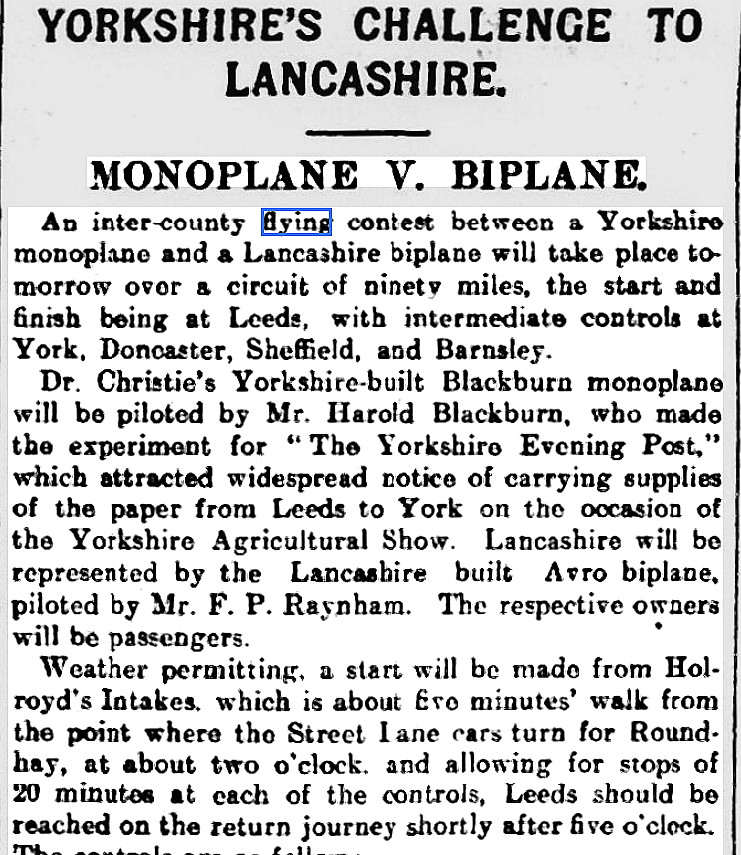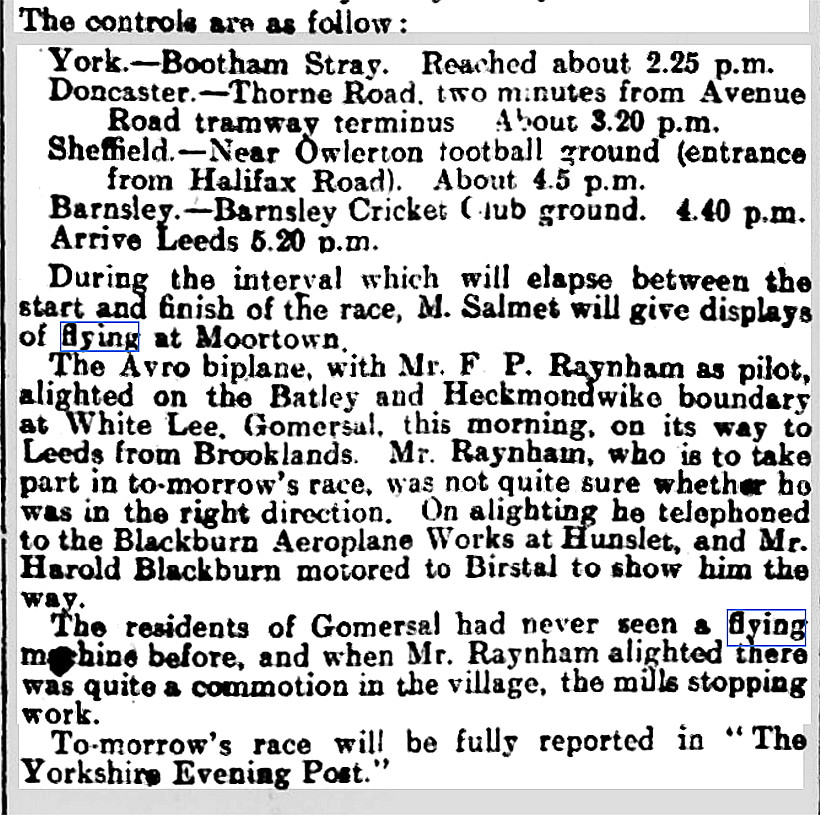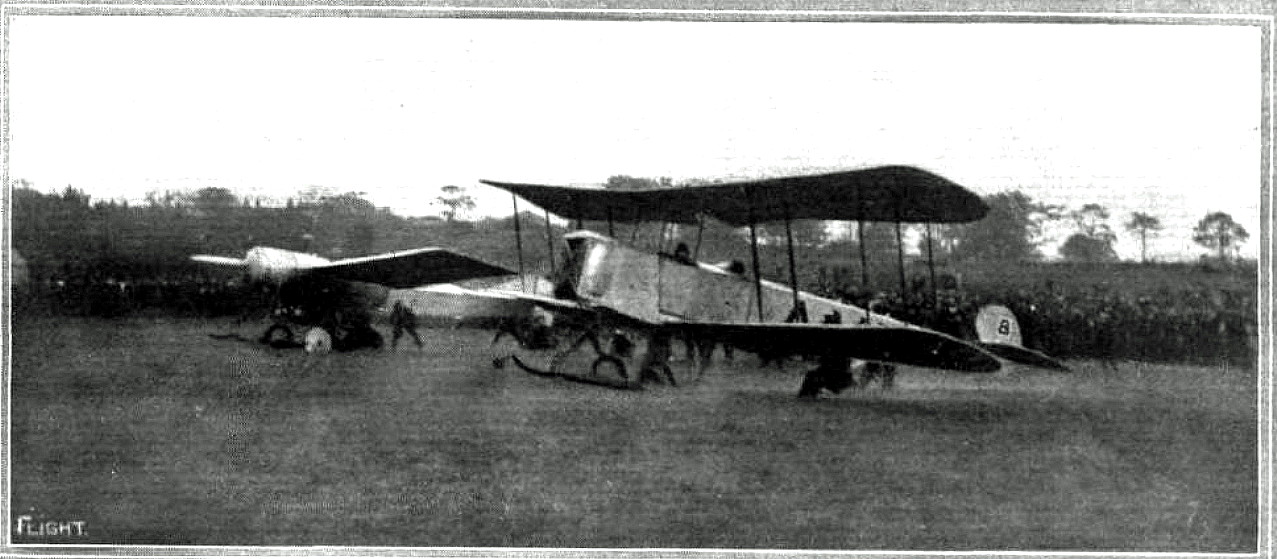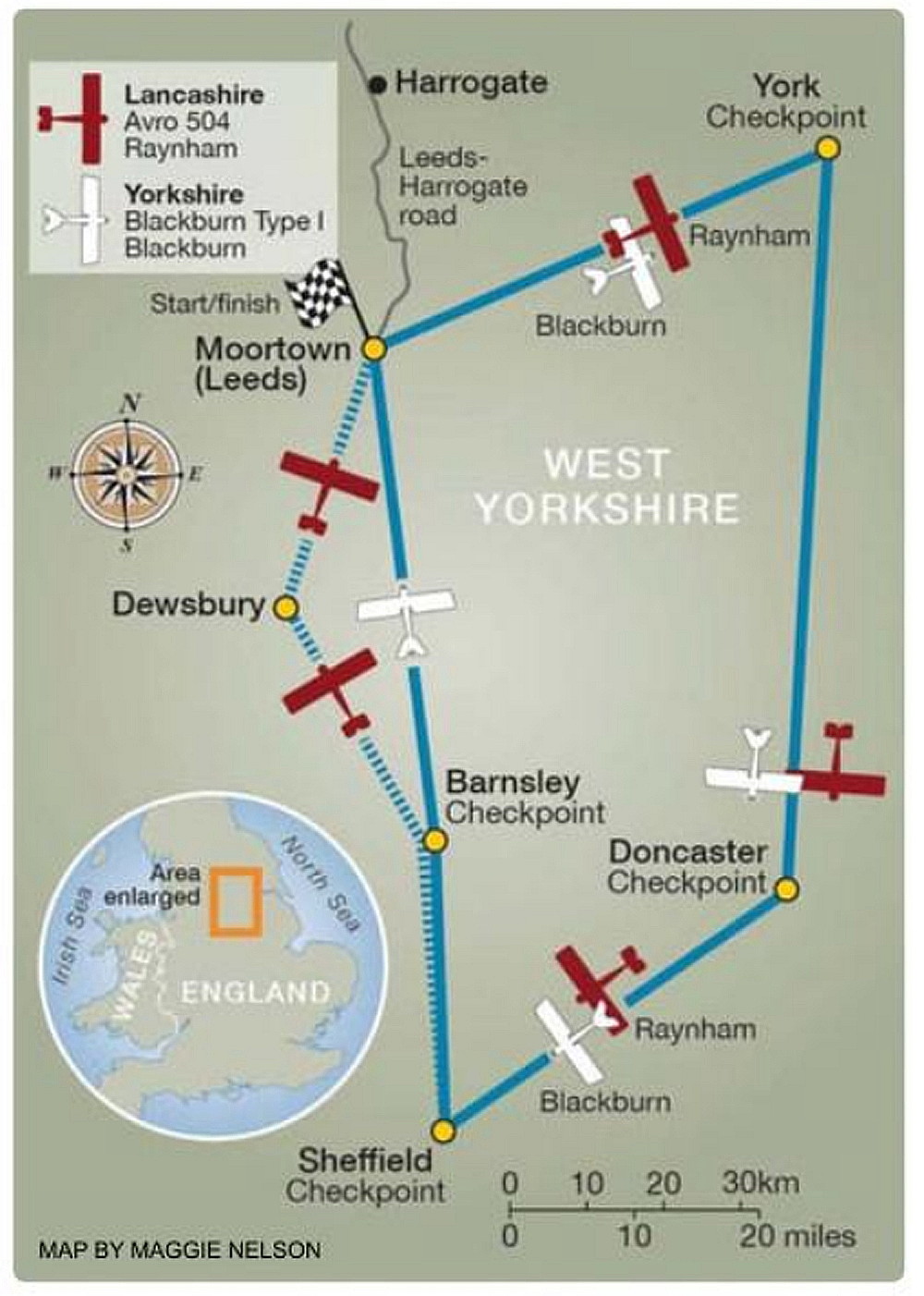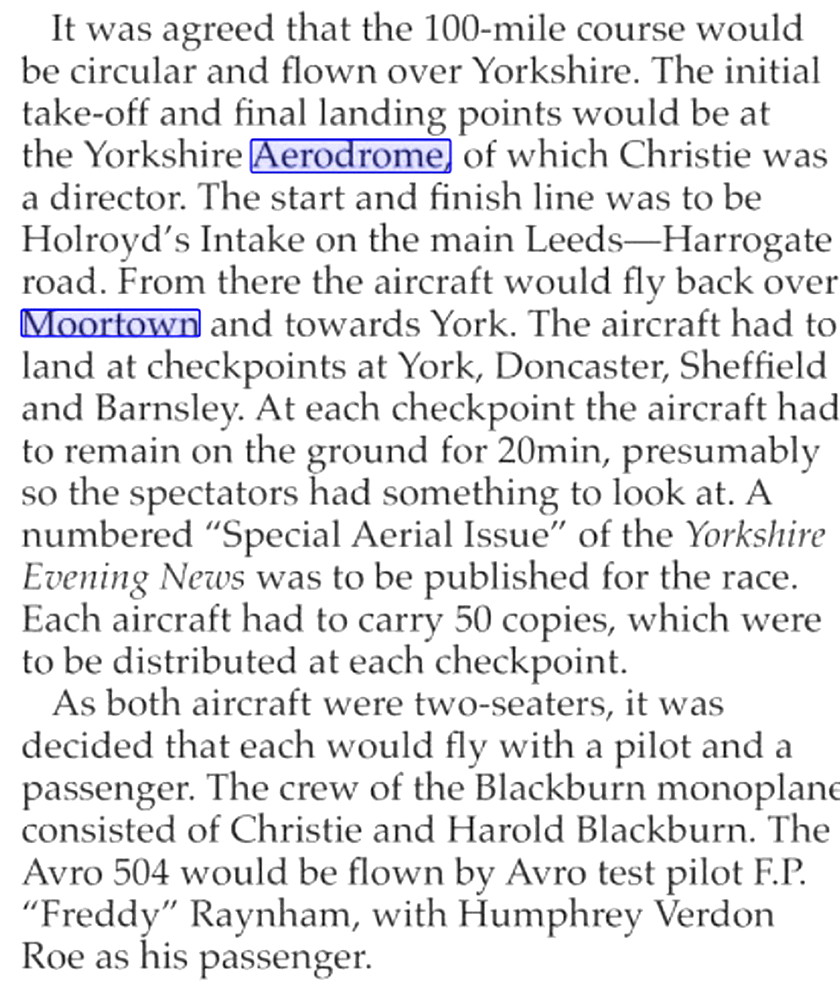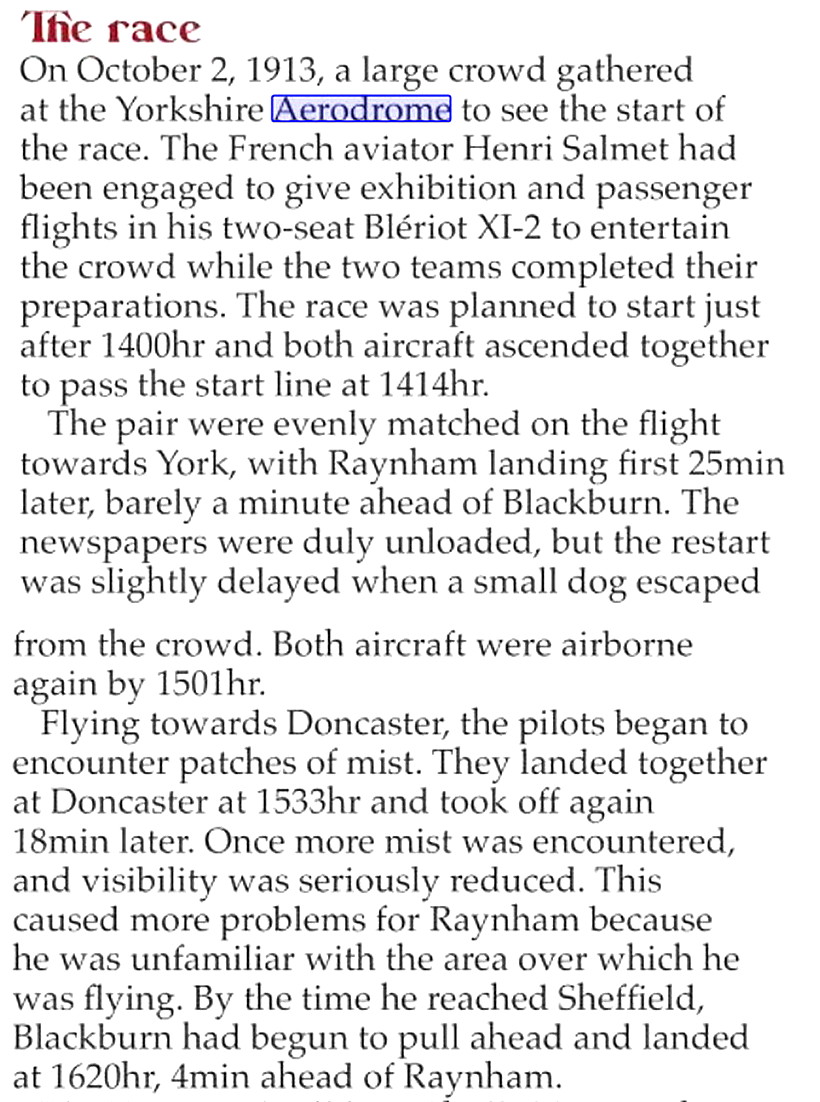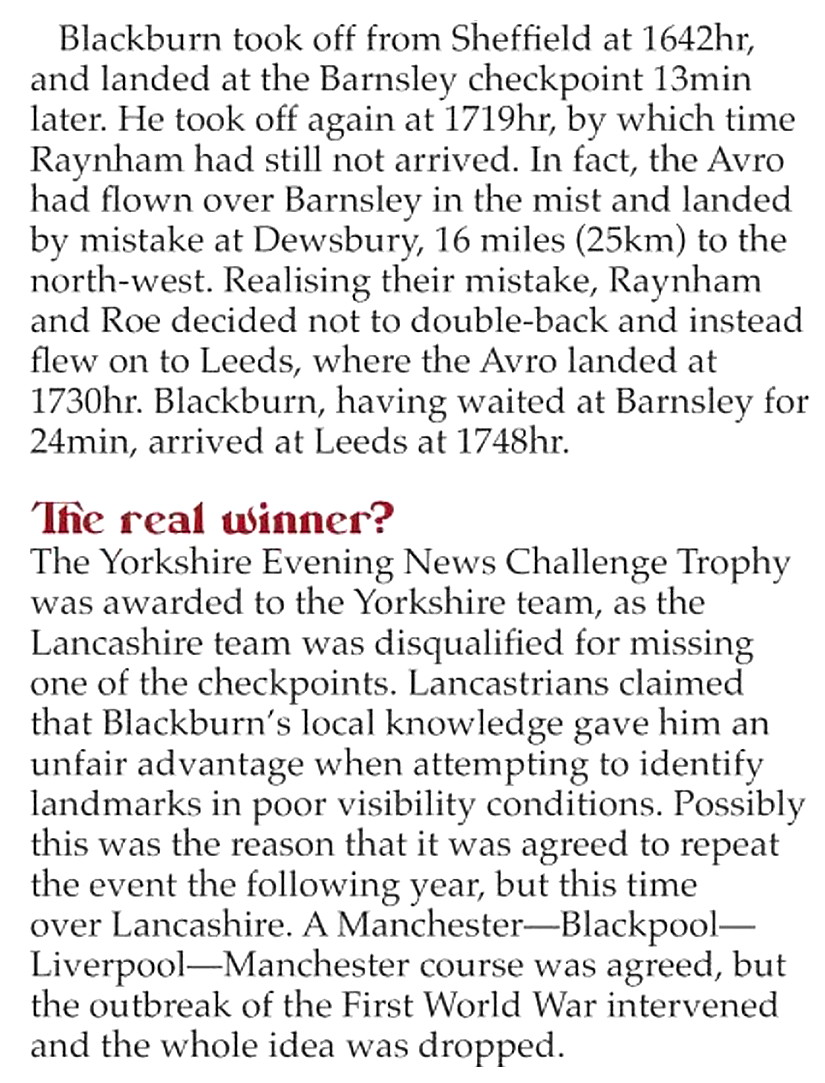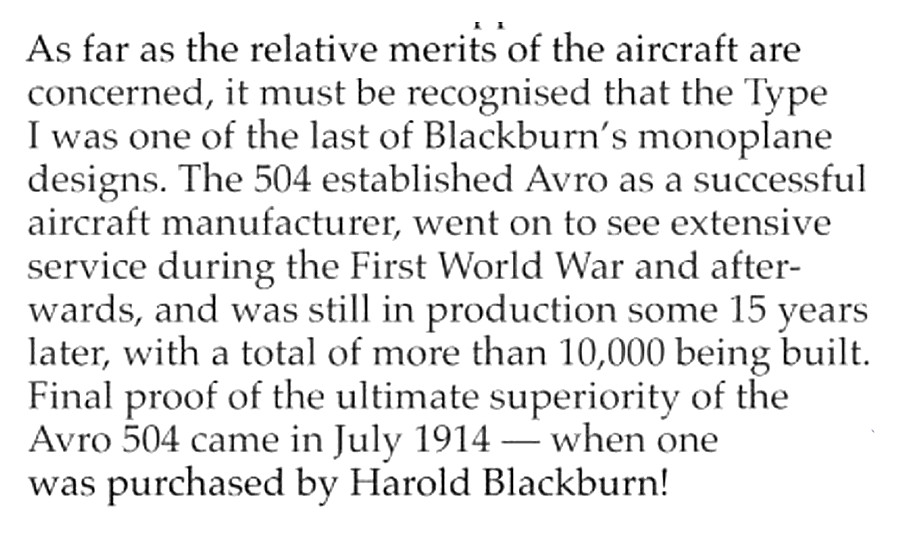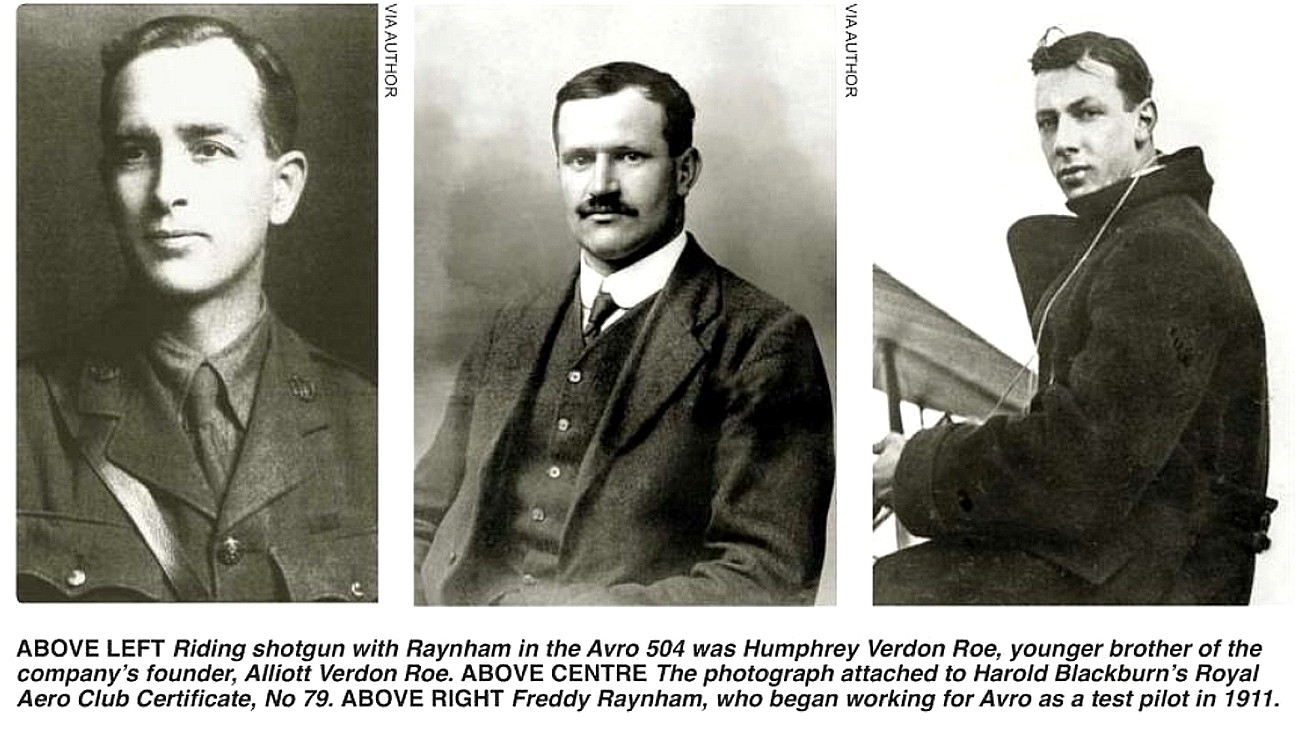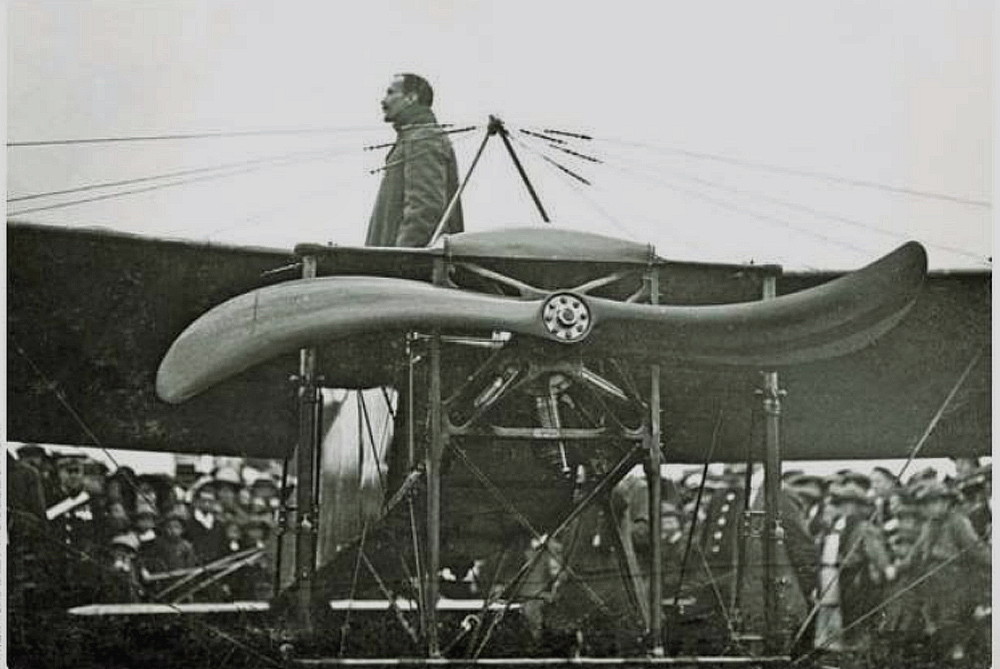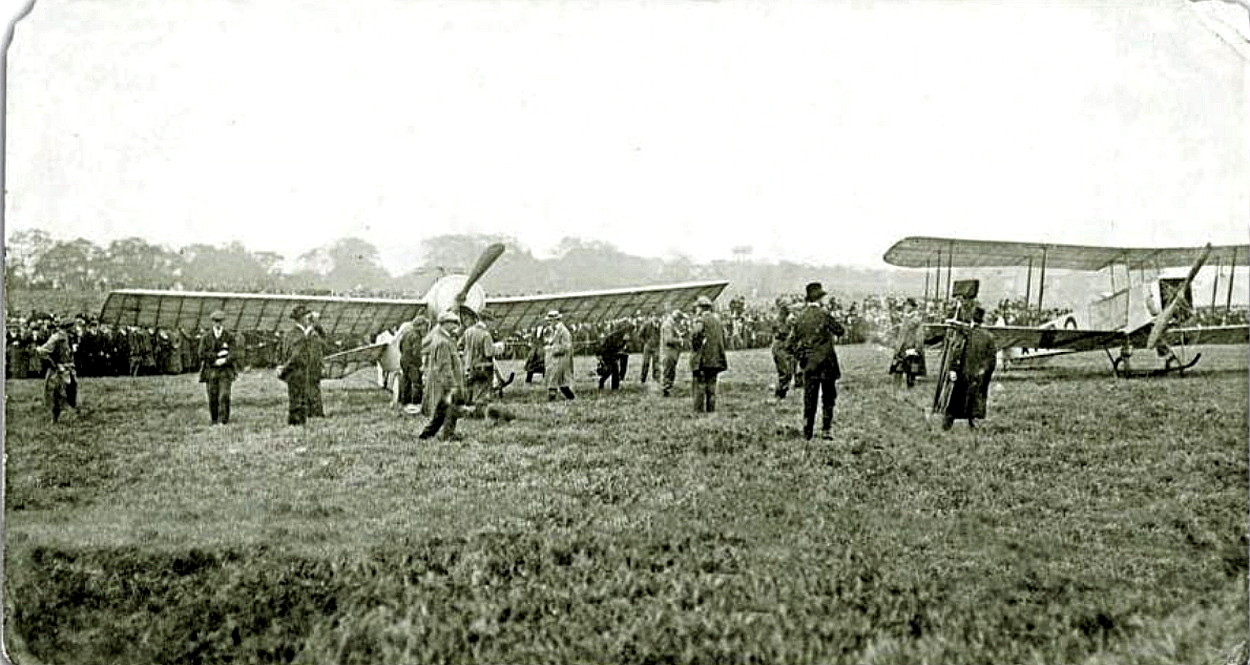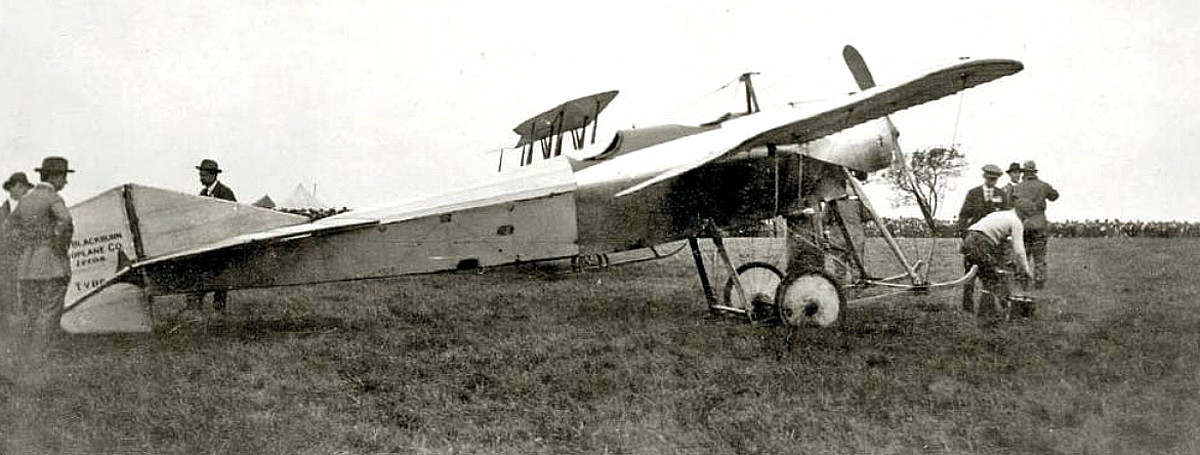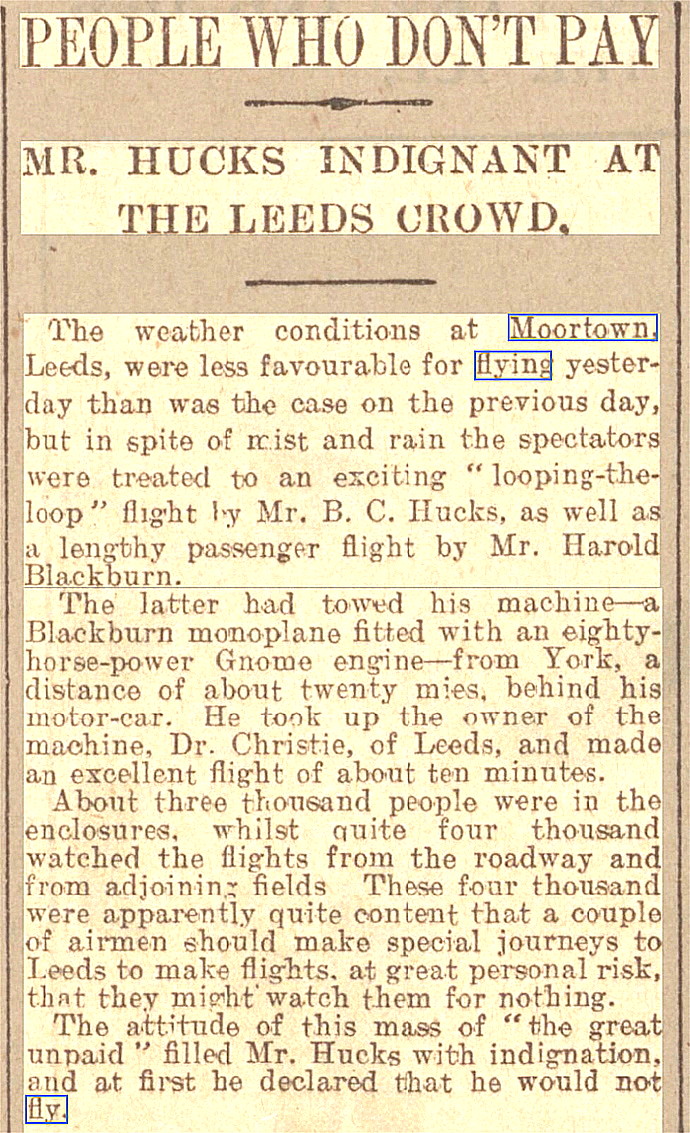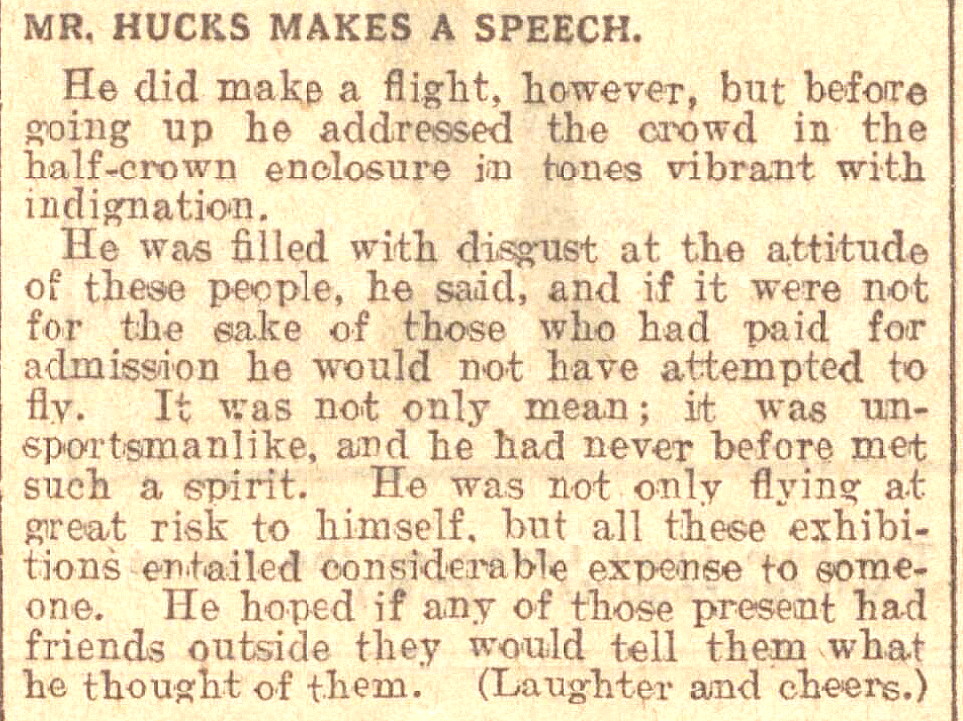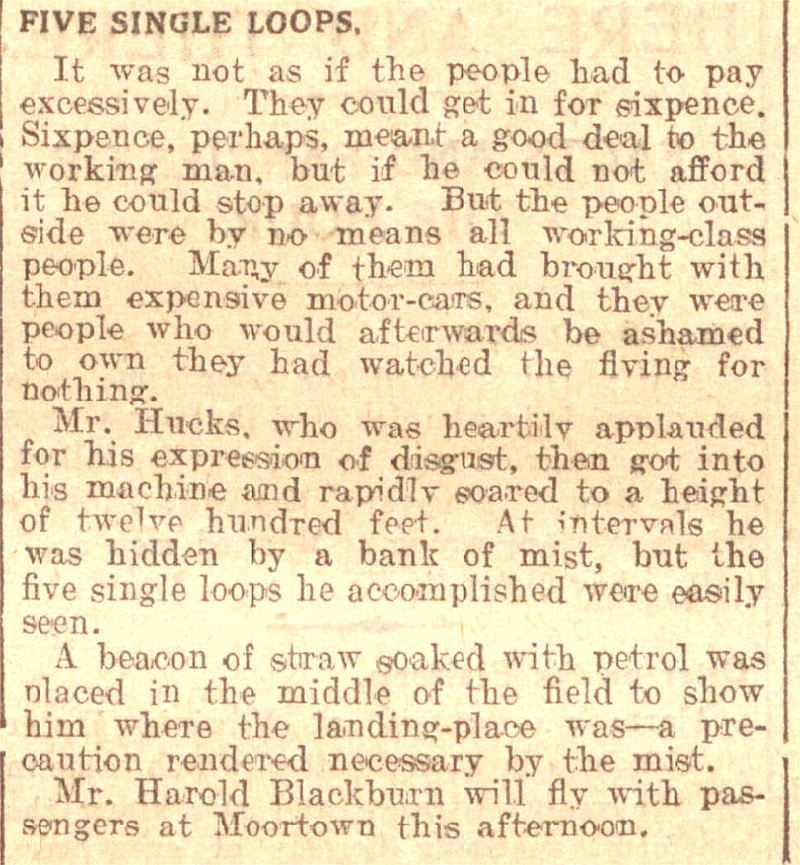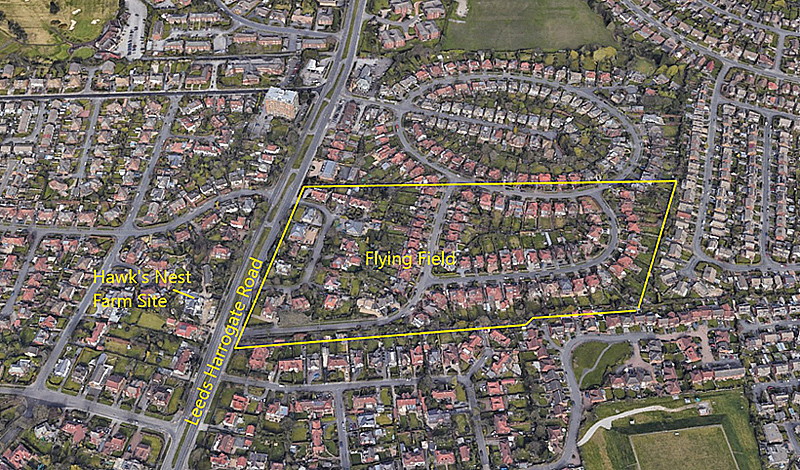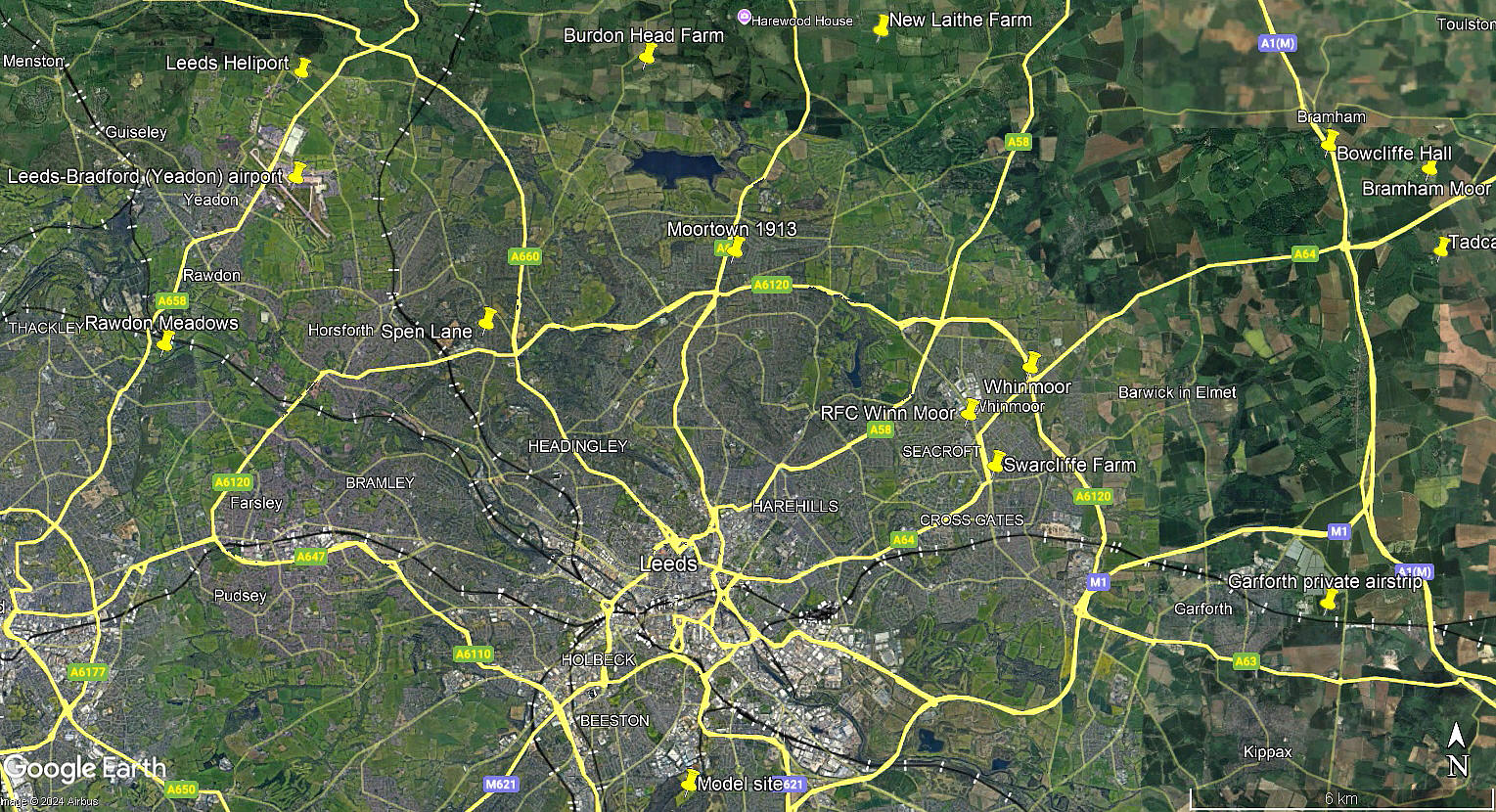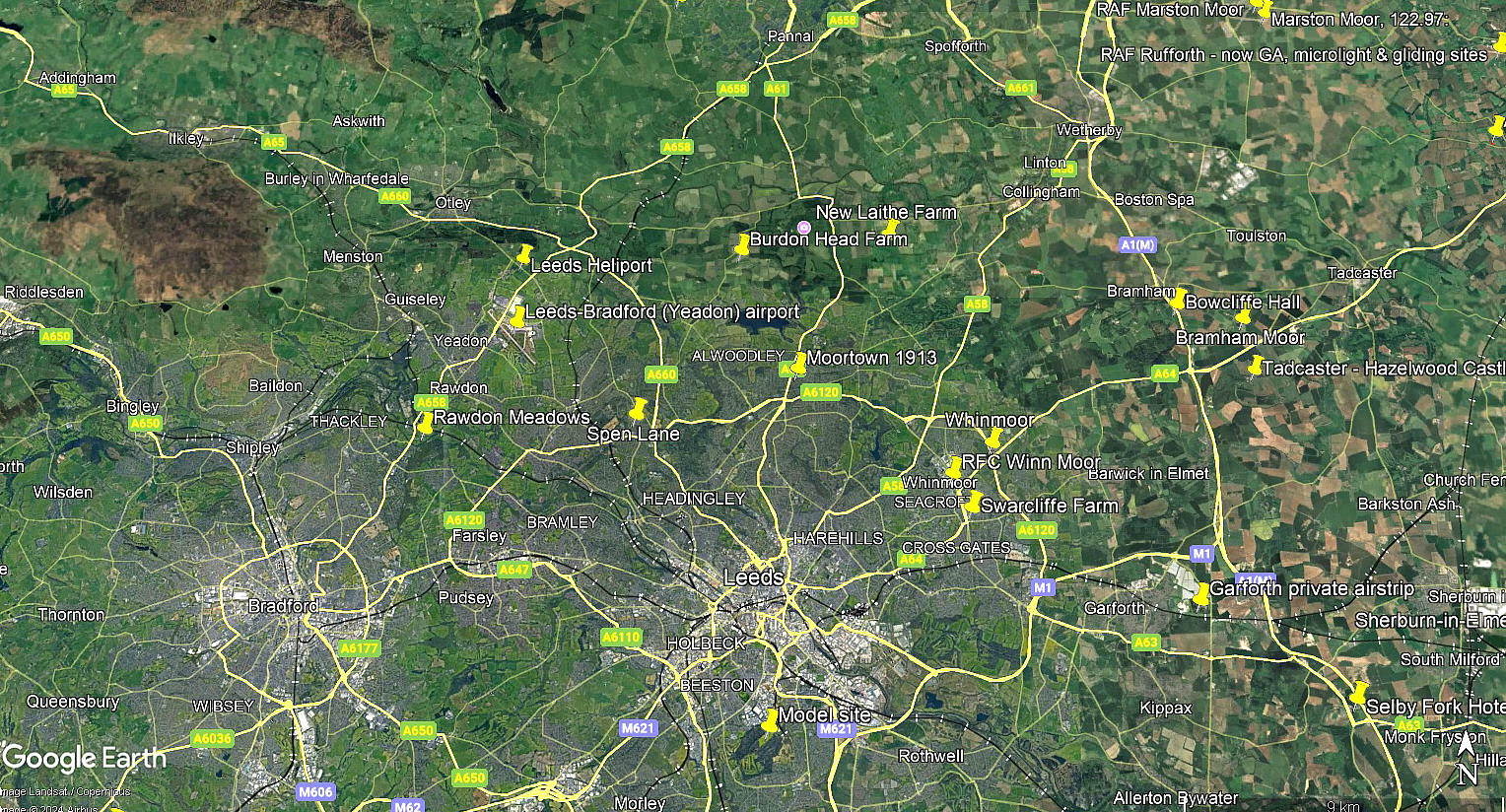Moortown
MOORTOWN: Temporary Landing Ground? (Aka HOLROYD'S FARM & HOLROYD'S INTAKES)
NOTE: It also appears that this location was known as YORKSHIRE AERODROME at this time. But, as far as we can tell to date, just for occassional use with no facilties such as hangars. Another contender for this title was LOFTHOUSE - see seperate listing. Many years ago I used to be uncertain, but now I am not so sure? And producing this 'Guide' often makes the situation worse!
Operated by: 07.01.12 to 10.01.12 Robert Blackburn (The Blackburn Type B was flown from here)
02.10.13 Start of the "War of the Roses" Yorkshire Race between Harold Blackburn (monoplane) and 'Freddy' Raynham (biplane)
Note: In effect this was also a race intended to prove, to some extent at least, which type of aeroplane was the fastest - a monoplane or a biplane? As you will see below, the results were hardly conclusive.
The rather jocular "War of the Roses" term was used because the Blackburn Type B was produced in Yorkshire whereas the Avro 504 type was being produced in Lancashire.
09.01.14 B C Hucks
Location: On the east side of the A61, about 0.5nm NNE of the A61/A6120 junction and roughly 4nm NNE of Leeds city centre
Periods of operation: 2nd October 1913 and 9th January 1914
A MICHAEL T HOLDER GALLERY
We have Mike Holder, a great friend of this 'Guide', for both discovering this location and then researching the subject, providing the following maps, pictures and newspaper articles and so on. It took Mike a while to discover exactly where it was. A common enough problem over the years in compiling this 'Guide' with, often, much help from others.
Bingo! At last Mike found this advert published in the Leeds Mercury on the 1st October 1913.
The article in two parts was published in the Yorkshire Evening Post on the 1st October 1913. The photo "Getting away at Moortown" was published in Flight magazine on the 11th October 1913.
The route diagram and the four excerpts are from The Aviation Historian, as are the first four photographs.
The French aviator Henri Salmet was, by this time, very famous indeed in the U.K.
He had been invited to attend the race start venue to entertain the crowd with exhibitions of flying on his Blériot monoplane. Note the term "on" rather than "in" as the term "on" was usually used in those days. And, have to say, looking at period photos, a better description? Also, it now occurs to me to consider the propeller design on his aeroplane. Cannot say when, but the 'scimitar' blade profile has, in more recent years, also been recognised as having superior performance, especially on turboprops. Like the Saab 2000 regional airliner.
The first picture of the Blackburn Type ?, is also from The Aviation Historian. The second "Type B" photo, with caption, is from Blackburn Aircraft since 1909 by A J Jackson. The 'family' design is clear enough, but what was this model called? Another aspect perhaps worth mentioning, is that the pilot of the Blackburn Type ?, Harold Blackburn, was no relation of the manufacturer, Robert Blackburn.
PUTTING A PERSPECTIVE ON THIS RACE?
This series of Blackburn designs was quite short lived and had no future, especially when WW1 aircraft production started in earnest. The Avro 504 type, however, had enormous potential, becoming a major type in WW1 used for training, night fighter, bomber and other roles, then becoming the mainstay of the joy-riding and flying circus operators between WW1 and WW2. Some almost 9000 were built during WW1 in the U.K. alone, others (around a couple of thousand more) being built in other countries under license.
THE ARRIVAL OF B C HUCKS
As this article, published in the Yorkshire Evening Post on the 19th December 1913 clearly shows, the arrival of B C Hucks, in January 1914, had attracted considerable interest. These days when we are so much softer by and large, January is regarded as being in the depths of winter, and most definitely a time of year to not be arranging "exhibitions of flying". But, it has to be said, after I learnt to fly, there are openings in the weather when flying at this time of year is without parallel.
The much colder air means that the engine produces more power, the propeller delivers more thrust, and the wings provide more lift. It's a win, win, situation. But, have to say, best enjoyed in an aeroplane with an enclosed cabin with a heater. B C Hucks had none of these benefits, sitting out there, on his machine, subjected to extreme cold! They had of course, learnt how to dress up for such conditions - to some extent at least.
I have never found another account of a pilot/aviator making such a declaration. Without any doubt he was justified in raising the issue, but it was a common enough situation.
At HENDON for example, large screens were put up to inhibit 'free-loaders' from seeing the landings and take-offs.
The modern aerial view was obtained from Google Earth © by Mike Holder. The local area view and area view are from my Google Earth © derived database.
And, perhaps I should add, that nowhere near all the flying sites listed in this 'Guide' are 'pinned' on my database. When I started this project over twenty five years ago, (from 2024), I thought I knew a thing or two about our aviation history. And I was quite correct, I did indeed know a thing or two - but nothing more! Producing this 'Guide, has been a voyage of discovery throughout, and the quest is far from over. Am still adding new locations pretty much every week.
We'd love to hear from you, so please scroll down to leave a comment!
Leave a comment ...
Copyright (c) UK Airfield Guide














